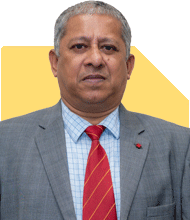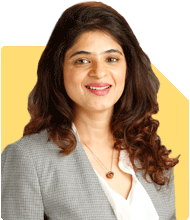Sir i m 35 with net monthly income of 80k, previously my wife was also working but not now.we have combined 20 lakh in shares n 45 lakh in mf. I want to accumulate 5 cr in next 10 years. Where to invest as i can save 50k monthly
Ans: Achieving your goal of accumulating Rs 5 crores in the next 10 years is ambitious but attainable with disciplined saving and investing strategies. Your current financial position, with Rs 20 lakhs in shares and Rs 45 lakhs in mutual funds, provides a strong foundation. Here’s a comprehensive guide on how to effectively invest your savings of Rs 50,000 monthly to reach your target.
Assessing Your Financial Situation
Your current net monthly income is Rs 80,000, and you have Rs 20 lakhs in shares and Rs 45 lakhs in mutual funds. Your wife is not currently working, which impacts your household income but does not preclude achieving your goal.
Setting Clear Financial Goals
It's important to set clear, measurable financial goals. Your target is to accumulate Rs 5 crores in 10 years. This requires a well-thought-out investment plan with a focus on both growth and risk management.
Understanding Investment Options
Investing in a mix of equity and mutual funds is essential for growth. Equity investments provide high returns but come with higher risk. Mutual funds offer diversification and professional management, which can balance risk and return effectively.
Disadvantages of Index Funds
Index funds simply mirror market indices and offer average market returns. They don’t exploit market inefficiencies or provide the potential for outperformance that actively managed funds do. Actively managed funds can offer better growth opportunities, making them more suitable for your aggressive target.
Benefits of Regular Funds Over Direct Funds
While direct funds have lower expense ratios, they lack professional guidance. Investing through a Mutual Fund Distributor (MFD) with CFP credentials provides personalized advice, aligning investments with your goals and optimizing returns.
Creating an Investment Strategy
Diversified Equity Portfolio: Invest in a diversified set of high-quality stocks across various sectors. This reduces risk while capturing growth from different parts of the economy. A Certified Financial Planner (CFP) can help identify promising stocks.
Actively Managed Mutual Funds: Choose actively managed mutual funds that have a track record of outperforming the market. These funds leverage market insights to provide better returns than index funds.
Systematic Investment Plan (SIP): Invest Rs 50,000 monthly through SIPs in a mix of large-cap, mid-cap, and small-cap mutual funds. This approach benefits from rupee cost averaging and reduces the impact of market volatility.
Balanced Funds: Consider balanced or hybrid funds that invest in both equity and debt instruments. These funds provide growth potential with reduced risk, making them a prudent choice for part of your portfolio.
Emergency Fund and Insurance
Ensure you maintain an emergency fund covering at least six months of living expenses. This fund should be easily accessible, preferably kept in a savings account or a liquid fund. Additionally, have adequate life and health insurance to protect your family’s financial future against unforeseen events.
Reviewing and Rebalancing Your Portfolio
Regularly review and rebalance your portfolio to ensure it remains aligned with your financial goals. Market conditions and personal circumstances change over time, and periodic adjustments are necessary to stay on track. Consulting with a CFP will provide professional insights for these adjustments.
Tax Efficiency in Investments
Different investments have different tax implications. Equity mutual funds held for more than one year qualify for long-term capital gains (LTCG) tax, currently at 10% on gains exceeding Rs 1 lakh annually. Debt funds held for more than three years qualify for LTCG tax at 20% with indexation benefits, significantly reducing taxable gains.
Avoiding Common Investment Mistakes
Emotional Decisions: Avoid making investment decisions based on emotions. Market fluctuations are normal, and disciplined investing will yield better results over time.
Lack of Diversification: Don't put all your money in one type of investment. Diversify across various asset classes to balance risk and return.
Neglecting Reinvestment: Reinvest dividends and interest to benefit from compounding. This can significantly enhance your portfolio’s growth over time.
Ignoring Professional Advice: Leverage the expertise of a Certified Financial Planner. Their guidance can help navigate complex financial decisions and optimize your investment strategy.
Long-Term Financial Planning
Retirement Planning: Continue to contribute towards your retirement corpus. Ensure you are on track to maintain your lifestyle post-retirement. Systematic investment in diversified equity and balanced funds can help grow your retirement corpus.
Children’s Education: If you have or plan to have children, start investing early for their education. Consider dedicated education funds or SIPs in diversified equity mutual funds for long-term growth.
Estate Planning: Ensure you have a clear estate plan. Create a will to specify asset distribution and consider setting up trusts if necessary. Proper estate planning can prevent legal disputes and ensure a smooth transfer of assets to your heirs.
Achieving Your Rs 5 Crore Goal
To achieve your Rs 5 crore goal in 10 years, you need a strategic investment plan. Your current savings and monthly investment capacity are solid, but disciplined execution and professional guidance are crucial. Here are detailed steps to help you achieve this:
Calculate the Required Rate of Return: Determine the annual rate of return needed to grow your current investments and monthly contributions to Rs 5 crores in 10 years. This will help you understand the risk and return profile required for your investments.
Select High-Quality Mutual Funds: Choose mutual funds with a history of strong performance. Diversify across large-cap, mid-cap, and small-cap funds to capture growth from various segments of the market.
Invest in High-Growth Stocks: Allocate a portion of your savings to high-growth stocks. These stocks offer higher returns but come with higher risk. Diversification and professional guidance can help manage this risk effectively.
Regular Monitoring and Adjustments: Continuously monitor your investments and make necessary adjustments. Regular reviews with your CFP ensure your portfolio remains aligned with your goals and market conditions.
Leverage Tax Benefits: Utilize tax-saving investment options under sections 80C and 24(b) of the Income Tax Act. This can optimize your overall returns and reduce the tax burden.
Additional Considerations
Economic and Market Conditions: Stay informed about economic and market conditions. Understanding macroeconomic trends can help make informed investment decisions.
Inflation Impact: Consider the impact of inflation on your investment returns. Ensure your investments are growing at a rate that outpaces inflation to maintain purchasing power.
Debt Management: If you have any outstanding debts, plan for their timely repayment. High-interest debts can erode your savings and investment returns.
Financial Discipline: Maintain financial discipline by sticking to your investment plan. Avoid impulsive spending and prioritize your long-term financial goals.
Final Insights
Achieving a Rs 5 crore corpus in 10 years requires a strategic approach and disciplined execution. By investing in a diversified portfolio of high-quality mutual funds and equities, leveraging professional guidance, and maintaining financial discipline, you can reach your goal. Regular reviews and adjustments, combined with a clear understanding of your financial goals and market conditions, will ensure you stay on track. Stay committed to your investment plan, and with time and patience, you will achieve your financial aspirations.
Best Regards,
K. Ramalingam, MBA, CFP
Chief Financial Planner,
www.holisticinvestment.in































